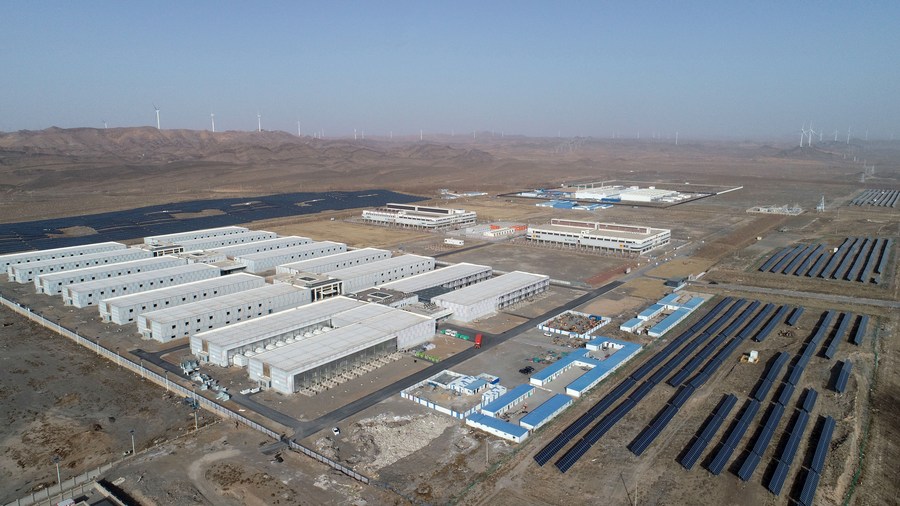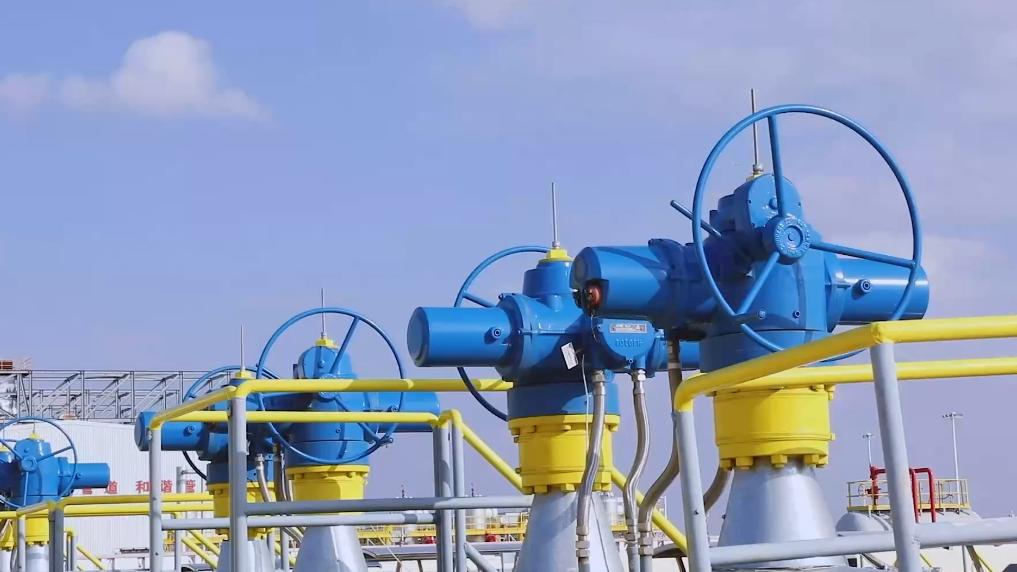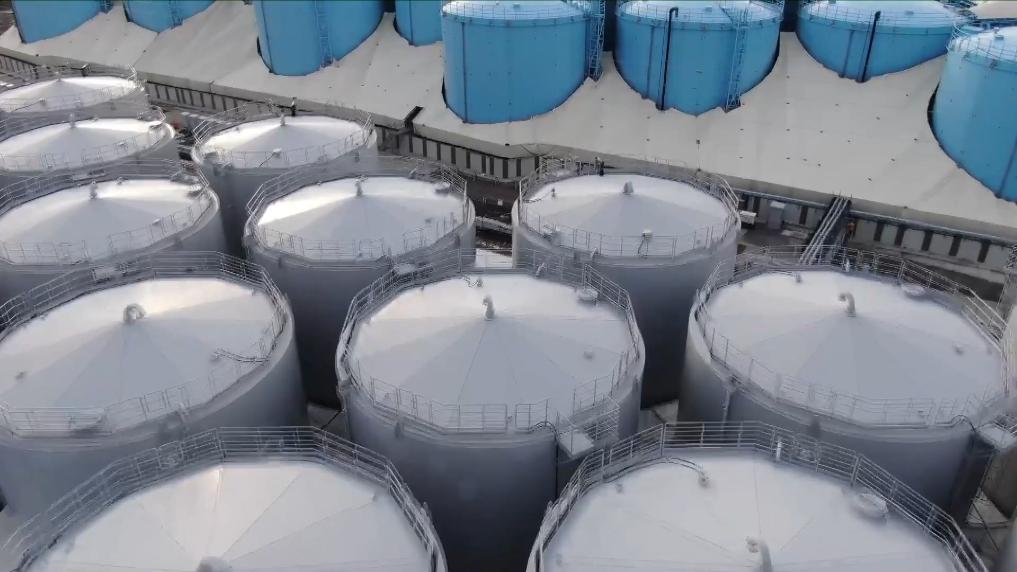
Aerial photo taken on March 1, 2022 shows a cloud computing base in Zhongwei City, northwest China's Ningxia Hui Autonomous Region. (Xinhua/Wang Peng)
YINCHUAN, Aug. 24 (Xinhua) -- In an industrial park in the coastal city of Xiamen in east China's Fujian Province, unmanned security vehicles were conducting patrols while transmitting real-time safety data to a cloud data center over 2,000 km away in Zhongwei City in the country's northwest Ningxia Hui Autonomous Region, all within a mere 0.1 second.
The cloud data center belongs to the Ningxia branch of Chinese telecom giant China Unicom which has recently introduced a 5G solution for remote vehicle control. Xiamen King Long United Automotive Industry Co., Ltd, one of the country's leading bus makers and the owner of the unmanned security vehicles, became the first user of this service.
The data transmitted to the cloud data center can undergo AI recognition, enabling the initiation of early warnings for safety hazards through computational processing, which can significantly strengthen the continuous security measures of the industrial park.
For many, the perception of Ningxia may be rooted in its inland setting, arid and chilly climate, and expansive deserts, which might appear as potential hindrances to economic progress. However, these very characteristics have transformed into advantages for the development of the big data and cloud computing industries in the region.
"Take Zhongwei as an example. The city boasts abundant new energy sources such as wind and solar power, with a dry and cold climate. The energy consumption of data centers here is at the lowest level nationwide, enabling them to offer enterprises ultra-low-cost computing power services," said Wu Lihua, from the Ningxia branch of China Unicom.
The computing industry is power-intensive, and high energy consumption has always been the main drawback of data centers. However, as China's first demonstration zone for new-energy comprehensive construction, Ningxia is a major green power supplier with abundant green energy resources.
According to the latest data, the share of installed capacity of new energy in Ningxia stood at 50.2 percent, and that of Zhongwei reached 86.18 percent. Today, data centers in Zhongwei transform green power into green computing power and channel the resources to the eastern areas.

This photo taken on April 16, 2023 shows a photovoltaic base on the Tengger Desert in Zhongwei City, northwest China's Ningxia Hui Autonomous Region. (Xinhua)
Owing to these distinctive strengths, Zhongwei has been chosen to be developed as a national internet exchange center and a national hub for integrated computing networks, according to the city's mayor Ma Honghai.
The average power usage effectiveness (PUE) of these data centers stands at 1.2 -- the closer the value is to 1, the better the energy efficiency, whereas, for most newly-built data centers in China, the average PUE is 1.73.
So far, 13 large and ultra-large data centers have been established here, attracting more than 200 cloud computing and related enterprises. These centers provide data storage and cloud computing services to over 4,000 companies including the e-commerce platform Meituan, consumer electronics manufacturer Xiaomi, and lifestyle-sharing platform Xiaohongshu.
In Ningxia, a total of 18 large-scale data centers are providing diverse services in a wide range of fields such as education, healthcare, ecological preservation, food safety, and transportation security for many regions, covering key urban clusters such as the Beijing-Tianjin-Hebei region, the Yangtze River Delta, and the Guangdong-Hong Kong-Macao Greater Bay Area.
During the 2023 China Computational Power Conference held in Ningxia's capital Yinchuan last week, 36 strategic cooperation agreements were signed, with a total value of 157.1 billion yuan (about 21.82 billion U.S. dollars), and 45 investment project contracts were signed, with a total value of 83.2 billion yuan.
These efforts are expected to facilitate the broader and deeper integration of the data and computing power industries into various fields, creating new technologies, new models, and new business formats, said Mai Yanzhou, vice chairman of the regional government of Ningxia. ■












